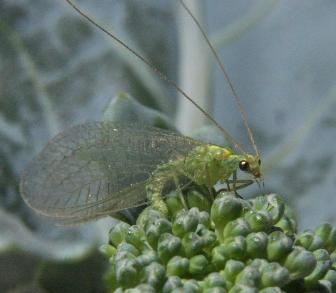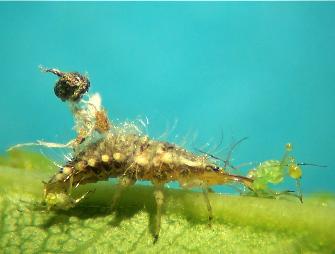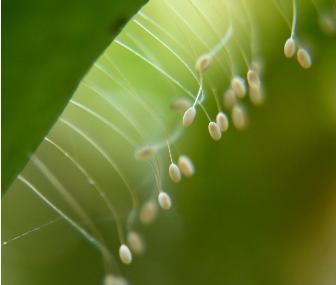Green lacewing
Mallada signata
General predator
|
 |
 |
|
Target Pests
|
The larva of lacewing is a predator of a wide range of pests including aphids, moth eggs and small larvae, scales and whiteflies.
|
 |
 |

|
Crops suitable
|
Field vegetables, tree crops, grapes and protected crops
|
 |
 |
Description
How to use
|
Adults, 15 mm long with long lace like wings. Eggs, laid on fine stalks. Larvae, pinchers for attacking prey, carry debris on their backs.
Lacewings are supplied as eggs from which larvae hatch shortly after arrival. Supplied either as loose eggs or with eggs adhered to small strips of paper.
Place the lacewing eggs through infected plants.
|
 |
 |
 |
 |
 |
 |
 |
Release rates
|
Rates will vary depending on the crop, the pest to be controlled and its density. The following is a guide only:
Protected crops: apply to pest infested areas initially at higher rates of 1,000 eggs per 200 m2. Followed by regular releases of 1,000 eggs per 1,000 m2.
Field crops: use inoculatively by applying 1,000 - 4,000 eggs per hectare. Preferably make two applications 10-14 days apart.
|
 |
 |

|
 |
 |
 |
 |
 |
Suppliers
Other biocontrol agents commonly used with Green Lacewings:
|
|
 |
 |

|
Detailed descriptions and instructions for use are provided in
The Good Bug Book - Second Edition Available from good bug suppliers
Or view or download a PDF file of the Book entry for Green Lacewings.
|
 |
 |
|









